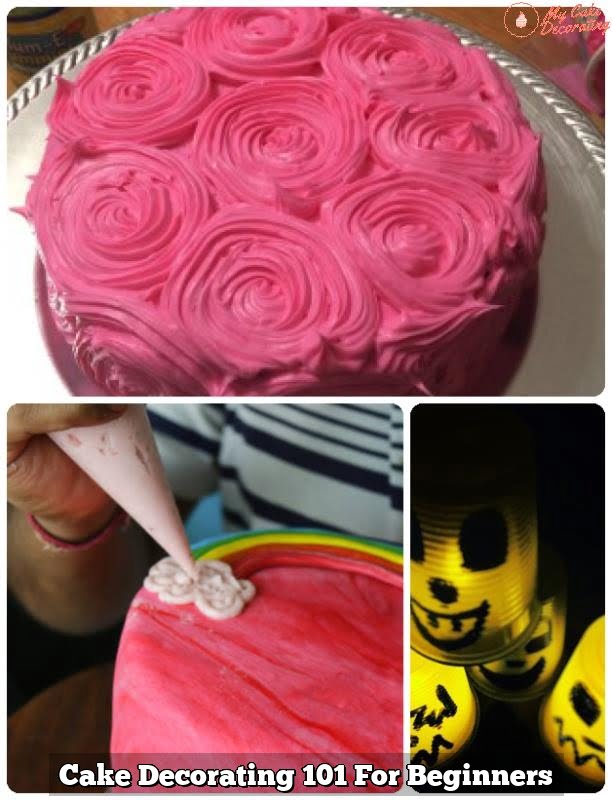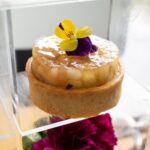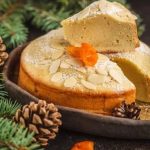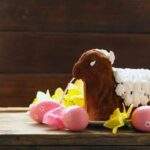Welcome to the world of cake decorating. Whether you’re a complete beginner or have dabbled in baking before, this article will provide you with a range of cake decorating ideas for beginners that will help you create delicious and eye-catching cakes.
Cake decorating is not only a fun and creative hobby, but it can also be a therapeutic and rewarding activity. It allows you to express your artistic side while indulging in the sweet flavors of homemade treats. With just a few essential tools and some simple techniques, you’ll be amazed at the beautiful cakes you can create right in your own kitchen.
Before we dive into the exciting world of cake decorating, let’s talk about why it’s such a great hobby for beginners. Not only does it allow you to unleash your creativity, but it also provides an opportunity to learn new skills and techniques.
From decorating cupcakes for birthday parties to crafting stunning multi-tiered wedding cakes, the possibilities are endless when it comes to cake decoration. So get ready to explore the basics of cake decorating and unlock your inner artist.
The Importance of Cake Decorating for Beginners
Cake decorating is not only a visually appealing skill, but it also offers numerous benefits for beginners. Whether you are looking to express your creativity or explore a new hobby, cake decorating can be a rewarding and enjoyable experience. Here are some reasons why cake decorating is such an important activity for beginners:
- Develops Creativity: Cake decorating allows beginners to unleash their imagination and explore different artistic possibilities. From selecting colors and patterns to creating intricate designs, the sky’s the limit when it comes to expressing your creativity on a cake. This process of experimenting with various techniques and designs helps beginners enhance their artistic skills and develop their own unique style.
- Enhances Problem-Solving Skills: Cake decorating involves problem-solving at every step. Beginners need to think critically and find solutions when they encounter challenges such as uneven frosting, piping mishaps, or design errors. By troubleshooting these issues, novice decorators learn how to think outside the box and develop innovative solutions. These problem-solving skills can be applied in other areas of life as well.
- Creates Memorable Experiences: One of the joys of cake decorating is that it allows beginners to create something beautiful that brings joy to others. Whether it’s baking a birthday cake for a loved one or designing an elaborate wedding cake, the act of making something special from scratch creates lasting memories for both the decorator and those who enjoy the finished product. It’s a way to bring people together and celebrate special occasions.
Building confidence through achievement
Another significant benefit of cake decorating for beginners is the sense of accomplishment that comes with successfully completing a cake design. As decorators improve their skills, they gain confidence in their abilities and feel motivated to take on more challenging projects. Each beautifully decorated cake becomes a testament to their progress, boosting self-esteem and providing a sense of achievement.
All in all, cake decorating is an essential hobby for newcomers due to its ability to foster creativity, enhance problem-solving skills, create memorable experiences, and build confidence. Whether you are a novice or have some experience in baking, cake decorating offers endless possibilities to explore and create edible works of art. So grab your piping bag and spatula, and dive into the exciting world of cake decorating.
Essential Tools and Supplies for Cake Decorating
When it comes to cake decorating, having the right tools and supplies is essential. As a beginner, it can be overwhelming to know where to start and what items are necessary for your cake decorating journey. In this section, we will provide you with a comprehensive list of basic tools and supplies that you should invest in to get started.
Baking Essentials
Before you can begin decorating your cake, you need to have the necessary baking essentials. These include:
- Baking pans: Invest in a few different sizes and shapes of baking pans so you have options for creating different cakes.
- Cooling racks: These are used to cool your cakes after they come out of the oven, allowing them to cool evenly.
- Offset spatula: This tool is great for spreading frosting smoothly onto your cakes.
Cake Decorating Tools
Now that you have your baked cake ready, it’s time to gather some specific cake decorating tools. Here are a few must-haves:
- Piping bags and tips: Piping bags allow you to control the flow of frosting, and tips help create different designs and patterns on your cakes.
- Spatulas: In addition to an offset spatula for frosting cakes, having a small spatula or palette knife is useful for detailed work or lifting delicate decorations.
- Turntable: A turntable makes it easier to rotate your cake as you decorate, ensuring even coverage and smooth finishes.
Ingredients and Supplies
In addition to tools, there are some key ingredients and supplies that every beginner should have on hand:
- Buttercream frosting: This versatile frosting is easy to make and work with. It serves as a base for many decorations and designs.
- Gel food coloring: Gel food coloring provides vibrant colors without altering the consistency of your icing or batter.
- Fondant: Fondant is a pliable icing that can be rolled out and used to cover cakes or create decorative elements.
Remember, as a beginner, you don’t need to have every tool and supply available. Start with the basics and gradually build your collection as you gain more experience. With these essential tools and supplies, you’ll be well on your way to creating beautifully decorated cakes.
Tips for Choosing the Right Cake
Choosing the right cake is an essential step in cake decorating for beginners. The choice of cake will not only affect the taste and texture but also impact how well the cake holds up during decorating. Here are some tips to help you choose the best type of cake for your beginner cake decorating projects.
- Flavor: When it comes to flavors, it’s best to start with a classic and versatile option like vanilla or chocolate. These flavors pair well with a variety of frostings and can be easily customized with different fillings or extracts. As you gain more experience, you can explore more adventurous flavors like lemon, red velvet, or even funfetti.
- Texture: For beginner decorators, it’s important to choose a cake with a sturdy yet moist texture that can withstand handling and decoration. Avoid cakes that are too delicate or crumbly as they may break apart when frosting or layering. A good option for beginners is a butter-based sponge cake which has a tender crumb but still holds its shape well.
- Size: The size of the cake will depend on your project and the number of servings needed. For beginners, it’s often recommended to start with smaller cakes such as 6-inch or 8-inch rounds. These sizes are easier to handle and decorate than larger tiered cakes. Additionally, smaller cakes allow you to practice different techniques without committing to a larger project.
| Tip | Description |
|---|---|
| Flavor | Start with classic flavors like vanilla or chocolate. |
| Texture | Choose a sturdy yet moist texture that can withstand handling. |
| Size | Start with smaller cakes like 6-inch or 8-inch rounds to practice. |
By choosing the right cake, you set yourself up for success in your cake decorating journey. Remember, as a beginner, it’s important to start with something manageable and build your skills gradually. Experiment with different flavors and textures as you become more confident in your decorating abilities. Happy cake decorating.
Simple Buttercream Frosting Techniques
Buttercream frosting is a versatile and delicious option for cake decorating beginners. It is easy to make, requires minimal ingredients, and can be used in a variety of techniques to create beautiful designs on your cakes. In this section, we will provide you with step-by-step instructions on how to make and apply a basic buttercream frosting, as well as some easy decorating techniques such as piping, borders, and rosettes.
To start with, here’s a simple recipe for making buttercream frosting:
Ingredients:
- 1 cup unsalted butter, softened.
- 4 cups powdered sugar.
- 2-3 tablespoons milk or heavy cream.
- 1 teaspoon vanilla extract.
Instructions:
- In a large mixing bowl, beat the softened butter until creamy and pale in color.
- Gradually add powdered sugar to the butter and beat until well combined.
- Add milk or cream one tablespoon at a time and continue beating until desired consistency is reached.
- Stir in vanilla extract for flavor.
Now that you have your basic buttercream frosting ready, let’s move on to some decorating techniques:
- Piping: Fill a piping bag fitted with your desired tip with the buttercream frosting. Gently squeeze the bag while guiding it along the surface of the cake to create different patterns or designs. You can use star-shaped tips for creating rosettes or flowers, round tips for creating dots or lines, or any other decorative tip you prefer.
- Borders: Using a piping bag filled with buttercream frosting, pipe around the edges of your cake to create borders. You can experiment with different shapes by changing the angle and pressure applied while piping.
- Rosettes: To create beautiful rosettes on your cake, start by attaching a star-shaped tip to your piping bag filled with buttercream frosting. Hold the bag vertically against the surface of the cake and apply gentle pressure while turning it in a circular motion. Release the pressure and pull away to create a rosette shape.
Remember, practice makes perfect. Don’t be discouraged if your first attempts don’t turn out exactly how you envisioned. With time and practice, you’ll become more comfortable with these buttercream frosting techniques and be able to create stunning designs on your cakes.
Introduction to Fondant
Fondant is a versatile and popular cake decorating medium that can take your cakes to the next level. If you’re new to cake decorating, introducing fondant into your repertoire can seem intimidating, but don’t worry. This section will serve as a beginner-friendly guide to working with fondant, giving you all the tips and tricks you need to create beautiful cakes.
One of the most common uses for fondant is covering cakes in a smooth and polished finish. To start, roll out your fondant on a clean surface dusted with powdered sugar or cornstarch to prevent sticking. Make sure your cake is leveled and frosted with a thin layer of buttercream icing before applying the fondant.
Gently lift the rolled-out fondant using a rolling pin and carefully drape it over the cake. Smooth out any air bubbles or wrinkles by gently pressing down and smoothing outwards from the center.
Once your cake is covered in fondant, you can start getting creative with shapes and embellishments. Fondant can be easily molded into various shapes such as flowers, figures, or decorative elements like bows or ribbons. You can use cookie cutters or special fondant shaping tools to help with creating these shapes. They can then be attached to the cake using a small amount of water or edible glue.
To add extra visual interest and texture to your fondant-covered creations, try using embossing mats or textured rolling pins. These tools allow you to imprint different patterns onto the surface of the fondant, giving it an elegant and professional look.
Remember that working with fondant may require some practice and patience. It’s okay if your first attempts don’t come out perfect – learning from mistakes is part of the process. Be sure to have fun while experimenting with different techniques and designs.
Creative Cake Decorating Ideas
Cake decorating is not only about making a cake taste delicious, but also about transforming it into a visually stunning creation. For beginners looking to explore their creative side, there are countless fun and easy cake decorating ideas to experiment with. Let’s take a look at some popular options that beginners can try out:
- Ombre Designs: One simple yet impressive technique is creating ombre designs on your cake. Start by dividing your frosting into several bowls and dye each bowl a different shade of the same color. Using a spatula or piping bag, apply the darkest shade at the bottom of the cake and gradually lighten the color as you move towards the top.
- Simple Floral Patterns: Flowers are a classic choice for cake decorations, and you don’t need to be an expert to create beautiful floral patterns. Using flower-shaped cookie cutters or molds, cut out fondant flowers in various sizes and colors. Arrange them on top of your frosted cake for an elegant and eye-catching design.
- Themed Decorations: Adding themed decorations to your cake can make it truly special for any occasion. Whether it’s a birthday, anniversary, or holiday celebration, consider incorporating elements that reflect the theme. For example, if it’s a beach-themed cake, use edible seashells made from chocolate molds or create palm trees using piped buttercream.
When trying out these creative cake decorating ideas (or any others that inspire you), keep in mind that practice makes perfect. Don’t be discouraged if your first attempts don’t turn out exactly as planned – learning from mistakes is part of the process. Experiment with different techniques and have fun exploring your own unique style.
To further enhance your skills in cake decorating, there are numerous resources available online and in books that provide step-by-step tutorials and inspiration for beginners. Additionally, consider joining local baking or cake decorating classes where you can learn from experienced instructors and fellow enthusiasts.
With these creative cake decorating ideas and a willingness to learn and experiment, beginners can create stunning cakes that will impress family and friends. So grab your tools, get creative, and let your imagination run wild in the exciting world of cake decorating.
Troubleshooting Common Cake Decorating Challenges
Decorating a cake can be a fun and rewarding experience, but it’s not without its challenges. As a beginner, you may encounter some common issues while decorating cakes. Don’t let these challenges discourage you. With a little troubleshooting and the right tips and solutions, you can overcome them and create beautiful cakes. In this section, we will address some of the most common cake decorating challenges that beginners may face:
One common challenge is achieving smooth buttercream frosting. Sometimes, air bubbles or uneven texture can appear on the surface of your frosting. To prevent this, make sure to remove any air bubbles by tapping the filled piping bag lightly against the counter before piping. You can also use an offset spatula to smoothen the frosting by gently gliding it over the surface in long strokes.
Another challenge beginners often face is getting sharp edges on their fondant-covered cakes. If your fondant edges are too rounded or bulging, you can try using a sharper tool such as a knife or pizza cutter to trim the excess fondant neatly. Additionally, gently press along the base of the cake with your fingers to secure any loose fondant and create clean edges.
Color bleeding is another issue that beginners may encounter when working with colored frostings or fondants. To prevent colors from bleeding into each other, make sure to allow enough time for one color to dry before adding another adjacent color. You can also separate colors with thin strips of parchment paper as a barrier until they are fully set.
Lastly, achieving consistent shapes and sizes when piping decorations can be challenging for beginners. One way to ensure consistency is by marking guidelines on your cake with toothpicks before piping. These markers can help guide your hand for more even spacing and sizing of decorations.
Remember, practice makes perfect. Don’t get discouraged if your first few attempts don’t turn out exactly as planned. Keep practicing these troubleshooting tips and soon you will be able to overcome any cake decorating challenge with confidence. So, have fun and embrace your creativity on this delicious journey.
Practice Makes Perfect
The key to becoming skilled in cake decorating is practice. As a beginner, it’s important to give yourself permission to make mistakes and learn from them. The more you practice, the better you will become at different techniques and the more confident you will feel in your abilities.
Start by practicing simple techniques such as piping borders and rosettes with buttercream frosting. Set aside some time each week to work on your skills and experiment with different designs. You can even try replicating cake designs that you find inspiring or challenging.
As you gain more confidence, consider taking on more advanced techniques such as working with fondant or creating intricate sugar flowers. There are plenty of online tutorials and classes available that can help you master these skills. Joining a local cake decorating group or community can also provide opportunities for learning and sharing ideas with other enthusiasts.
Don’t be afraid to think outside the box and let your creativity shine. Experiment with different colors, textures, and flavors. Try incorporating unique elements such as edible flowers, sprinkles, or hand-painted designs.
Remember that everyone starts somewhere, so embrace the journey of learning and improving your cake decorating skills. With practice and dedication, you’ll soon be creating beautiful works of art that not only taste delicious but also look stunning.
So go ahead, grab your spatula and piping bags, and start practicing. The world of cake decorating is waiting for you to unleash your creativity.
Conclusion
In conclusion, cake decorating is a wonderful hobby for beginners that allows them to express their creativity and have fun in the kitchen. With the essential tools and supplies, as well as a basic understanding of different frosting techniques like buttercream and fondant, beginners can easily create beautiful and impressive cakes.
It is important for beginners to remember that practice makes perfect. By experimenting with different techniques and designs, they can continue to improve their skills and create even more stunning cakes. The key is to not be afraid to try new ideas and push the boundaries of their creativity.
For those who are looking to further enhance their cake decorating skills, there are countless resources available online such as tutorials, videos, and forums where beginners can learn from experienced decorators. By seeking out these resources and continuing to learn and grow, beginners can take their cake decorating skills to the next level.
So, whether you are a beginner who has just taken your first step into the world of cake decorating or someone who has been dabbling in it for a while, remember to have fun, embrace your creativity, and let your imagination run wild as you create edible works of art. Happy cake decorating.
Frequently Asked Questions
What is the easiest cake to decorate?
The easiest cake to decorate would be a sheet cake. Sheet cakes have a large surface area, making them ideal for simple decorations. You can easily frost the entire cake with a smooth layer of icing and then add basic decorations such as piped borders or simple patterns with different colored icings.
Additionally, you can use edible decorations like sprinkles, chocolate shavings, or fresh fruits to enhance the appearance of the cake without much effort. The simplicity of decorating a sheet cake allows even novice bakers to create visually appealing designs.
How to decorate simple homemade cake?
Decorating a simple homemade cake can be easily achieved by following a few basic steps. Start by allowing your freshly baked cake to cool completely before attempting to decorate it. Once cooled, level off the top of the cake if necessary to ensure an even surface for decorating.
Next, apply a thin layer of frosting called a crumb coat all over the cake to trap any loose crumbs and create a smooth base. Allow this coating to set for several minutes before adding another thicker layer of frosting, which you can spread evenly using an offset spatula or butter knife. To finish decorating your simple homemade cake, use various techniques such as piping flowers or borders using different colored icings, adding decorative elements like sprinkles or edible pearls, or writing personalized messages with icing pens.
How do I make a simple cake look good?
There are several ways to make a simple cake look good with minimal effort. One effective method is choosing the right frosting and color combination that complements your overall design vision. Selecting bright or pastel hues can instantly make any simple cake appear more appealing and exciting. Furthermore, investing in some basic tools like piping bags and tips can greatly enhance your decorating skills without requiring advanced techniques.
Utilizing these tools allows you to add elegant details such as rosettes, stars, or ruffles that instantly elevate the visual appeal of your simple cake creations. Additionally, considering presentation is crucial in making your cake look good – using a nice cake stand, arranging fresh flowers or fruit around the cake, or dusting powdered sugar on top can all contribute to an aesthetically pleasing final product. Ultimately, simplicity can be beautiful, and a simple cake can look stunning with thoughtful attention to detail.

Welcome to my blog about home and family. This blog is a place where I will share my thoughts, ideas, and experiences related to these important topics. I am a stay-at-home mom with two young children. I hope you enjoy reading it! and may find some helpful tips and ideas that will make your home and family life even better!





